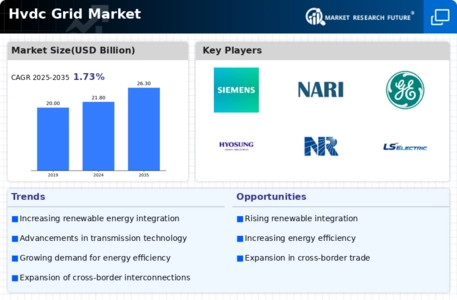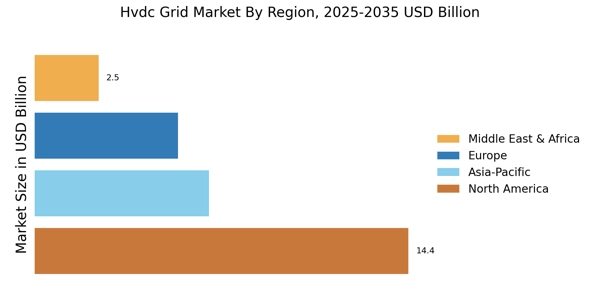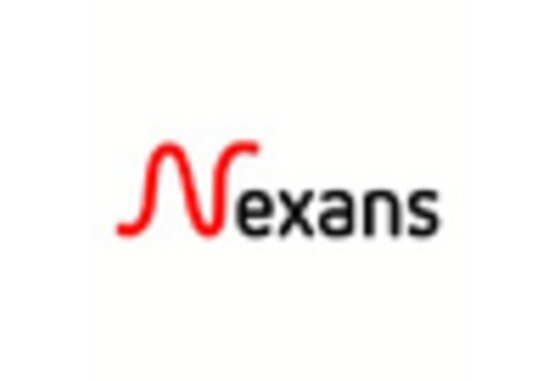The global HVDC grid market is anticipated to reach USD 25.0 billion by 2032, expanding at a CAGR of 1.73% from 2024 to 2032. This growth is attributed to increasing demand for electricity transmission over long distances, rising investments in renewable energy sources, and growing adoption of HVDC technology.
The market growth is also supported by government initiatives to reduce carbon emissions and promote the use of clean energy. Recent developments in the market include the commissioning of the world's longest HVDC link, the China-Pakistan Economic Corridor (CPEC) HVDC transmission line, and the development of new HVDC technologies such as voltage-sourced converters (VSCs).
On March 20, 2024, at the CERAWeek conference, Grid United and Hitachi Energy joined forces to extend HVDC capacity in the United States. This joint effort entails a multi-contract framework, the objective of which is to build high-voltage transmission structures connecting the Eastern and Western regions of the U.S. power system. This attempt is part of dealing with global brokerage issues for HVDC components.
Prysmian and Siemens reported cross-sector cooperation in August 2024 to offer DC cable and converter solutions for interconnection projects across Europe’s power grid. This business venture underlines the accentuation of renewable energy penetration enhancement and supporting transmission systems.
In August 2023, ABB won an important contract for the modification of the DolWin5 wind farm offshore HVDC connection in Germany. The project will include the incorporation of digital technologies intended to improve the effectiveness and reliability of operations.
Siemens Energy successfully bid for a $2 billion agreement to design HVDC technology for projects that enhance renewable energy transmission between Scotland and England via undersea cabling in September 2023.
In November 2023, Mitsubishi launched its diamond VSC technology in Japan in conjunction with a contract for the construction of a 300 MW back-to-back HVDC converter station in the Japanese market, which signifies progress in the expansion of the supply chain for HVDC systems worldwide.
In December 2023, TenneT, the Dutch-German operator, declared investments in the HVDC grid expansion framework worth 30 billion euros, involving cooperation with major European cable manufacturers and technology providers.
In April 2024, Siemens Energy finalized the acquisition of HVDC transmission technology from Sumitomo with the intention of increasing its presence in the power transmission systems.
In June 2024, Hitachi reinforced its position in the HVDC market by completing the merger with ABB Power Grids, stressing the aspects of clean energy transmission.


















Leave a Comment